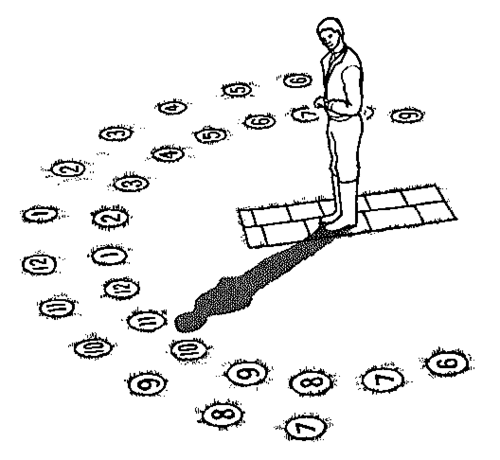23. Sneaks and Kicks
‘Space Jam’ Movie 1996, Starring Michael Jordan and
Bugs Bunny
The most popular shoe in the popular culture. Popularised by Michael Jordan himself. He wore them as a rookie in 1984 in the NBA. It became instantly famous for going against the colour regulations which stated that sneakers have to be at least a majority of white colourations and had to match team uniform colours. The Air Jordan was introduced in 1985 by Nike, made in collaboration with Michael Jordan himself, designed by Peter Moore. The first ever model was dubbed Air Jordan 1, which sported a majority of Black and Red colours, to match the colour of the Chicago Bulls uniform, the team Jordan was playing for at the time. Nike was issued a $ 5,000 fine for every game, Michael wore the black and red Air Jordans 1.
A sneaker head is someone who collects sneakers, with a passion for it and a intuition of the history of the shoes. The Air Jordan line of sneakers is one of those sneaker which changed the game and the culture for the better, without flaws and drawbacks.
These sneakers line were further popularised by many celebrities. Actors, rappers, singers alike.
Tom Cruise in the Jordan 11 ‘DMP’
The Backstreet Boys with Jordans
It became a dream for every sneaker head to include these sneakers in their collection.
Retro Air Jordan shoes are introduced that were the classic remake of the Air Jordans that Michael wore back in the day, slightly modified to match with the current trends. As a part of the 23 year celebrations, the Jordan brands started a multi year campaign ‘fusing’ the Air Force 1 with Air Jordans creating the Air Jordan Fusions.
Below is a look at each and every pair of Air Jordan shoes released by Nike, a total of 26 in all (not counting variations). Next to each pair is Nike's motto for the shoe and the year in which they debuted.
Air Jordan I "Notorious" 1984-85
Air Jordan II "Italian Stalion" 1987
Air Jordan III “Gotta Be The Shoes” 1988
Air Jordan IV “Taking Flight” 1989
Air Jordan VII “Pure Gold” 1992
Air Jordan IX “Perfect Harmony” 1994
Air Jordan X “The Legacy Continues” 1995
Air Jordan XVII “Jazzed Up” 2002
Air Jordan XXII “Hit the Afterburners” 2007
Air Jordan 2009 “Beyond” 2009
Air Jordan 2011 2011
Air Jordan 2012 “Choose Your Flight” 2012
Air Jordan XXVIII “Dare to Fly” 2013
Michael not only wanted his shoes to be famous on the court, but off it as well. The first Air Jordan to employ this philosophy was the Air Jordan III. Co-Designed by Tinker Hatfield along with Michael in 1988, this Air Jordan is famous for implementing elephant print on a basketball shoe, as well the first Air Jordan to have the, famous Jumpman logo and a visible air unit. This style of design made it so that the Air Jordan would be seen as a shoe that you can wear while playing ball, but also as casual dress wear for the urban kid or teen. This design process would evolve with every new Air Jordan released every season. This always ensured that Air Jordans would always remain in style, as they still do to this day.
The high price tag made the desired shoes out of reach for the low income kids that craved them the most. Thus Air Jordans became subject to violence and crime. Around the U.S., reports would come in of kids getting robbed and killed for their Air Jordans. Today, even campouts at Air Jordan release days are dangerous things to attend, forcing stores to employ raffle systems and other means to control crowds of consumers who want to get their hands on the latest Air Jordan. Violence wasn’t the only thing to come out of the growing popularity of these sneakers however. In the more recent years, reselling became popular as Air Jordans became harder and harder to get due to the exclusivity and somewhat limited numbers for some pairs. Resellers are usually looked down upon in the sneaker community as they buy Sneakers by the bulk for retail and resell for double and even triple the original cost. Jordans are the most common sneakers resold due to the reasons mentioned above, and some even say the reason why resellers appeared in the culture. This made it near impossible for true sneakerheads to obtain a pair they wanted unless they got lucky and were able to get theirs for retail. Even though Air Jordans have made negative impacts on the culture, measures are being taken by the community to ensure that these problems are being noticed and hopefully acted upon.












